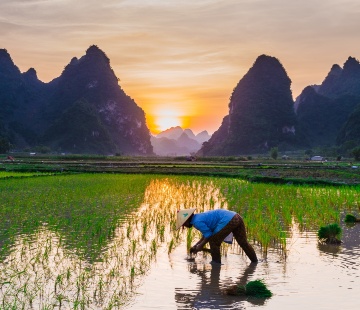The Mongolia trip was amazing and we loved every minute of it! We had perfect weather until the last day when there was torrential rain that closed the main road to Ulaanbaatar for miles when we were driving back from Karakorum and forced us to make a major detour around the water. But despite the rain we managed to see the famous takhi horses in Hustain Park. So the trip was epic from start to finish. All the logistics worked out smoothly including the internal flights which were all on time. All the local drivers were excellent and did an outstanding job in difficult terrain, especially the driver who got us to and back from Lake Khovsgol on an extremely muddy road twisting through fields and forests. The lake was still partially frozen so the boat service wasn’t operating and we had to drive instead. When there was problem, with our driver’s vehicle, a backup driver was summoned to make sure we got back for our flight to Ulaanbaatar.
I can’t speak highly enough of our superlative guide, Mr. Batmunkh (Bu Juu). He speaks perfect idiomatic English (and also guides in Russian and Chinese) and was extremely knowledgeable about Mongolian history and culture and able to answer all our questions effortlessly. He was well-organized and efficiently arranged visits to nomadic families, camel rides in the Gobi, and horseback riding outside of Karokorum. He also brought along books on the flora and fauna for us to look at and arranged for us to see a number of outstanding films, “Eagle Huntress” and “The Story of the Weeping Camel,” which gave us further insight into Mongolia and what we were seeing on our trip. And taught us knucklebone games.
To go through the trip chronologically, I loved staying at the Terelj Hotel. It has lovely staff, excellent service, and a beautiful pool. Breakfasts were very good. Terelj National Park was spectacular and I enjoyed visiting the Meditation Temple and the excursion to Jalman Meadows and visiting a local herdsman’s family. In Ulaanbaatar the Gandan Monastery was a highlight as were the very comprehensive National Museum and the Zanabazar Fine Arts Museum. The Gobi desert was stunning. I very much enjoyed hiking in the Yol Valley and the extraordinary Hongor Sands. June was the perfect time to visit the Gobi which wasn’t hot yet and we had many sites virtually to ourselves including the amazing Flaming Cliffs. The VIP ger in the Gobi Oasis Camp was very comfortable and well appointed. The Gobi Erdene Camp was simpler but adequate and is perfectly located. I loved the rustic charm and the deluxe gers at Three Camel Lodge and the food was outstanding. Climbing up to see the petroglyphs at Havtsgait was a highlight of the trip. Truly unique and spectacular! We also had a lovely visit with a local camel herding family near the Moltsog Sands. Lake Khovsgol was beautiful and I loved staying on the peninsula and hiking to visit the wishing rock. I loved the simple lodge, the excellent food, and especially the friendly staff who made fires for us, fired up the sauna, etc. Karakorum was another highlight of the trip and I would highly recommend that others visit for its historical interest and for the beautiful Erdene Zuu monastery and the Shankh Hiid monastery where we spoke with a monk, which also survived the purge. The Museum is excellent and we also visited a local market. One must see in Ulaanbaatar is the Tumen Ekh national traditional music and dance group which performs near the Bayangol Hotel. They were superb. I would also highly recommend Mary and Martha for high quality Kazakh embroidery, felt products, traditional clothing, etc. On our own we also visited the Bluefin Gallery which had a large and interesting display of contemporary Mongolian art.
The food in the ger camps was mostly very good. The Bayangol Hotel is very well located but a bit quirky. The Shangri-La is lovely and luxurious.
Thank you for arranging such a memorable trip for us!

















